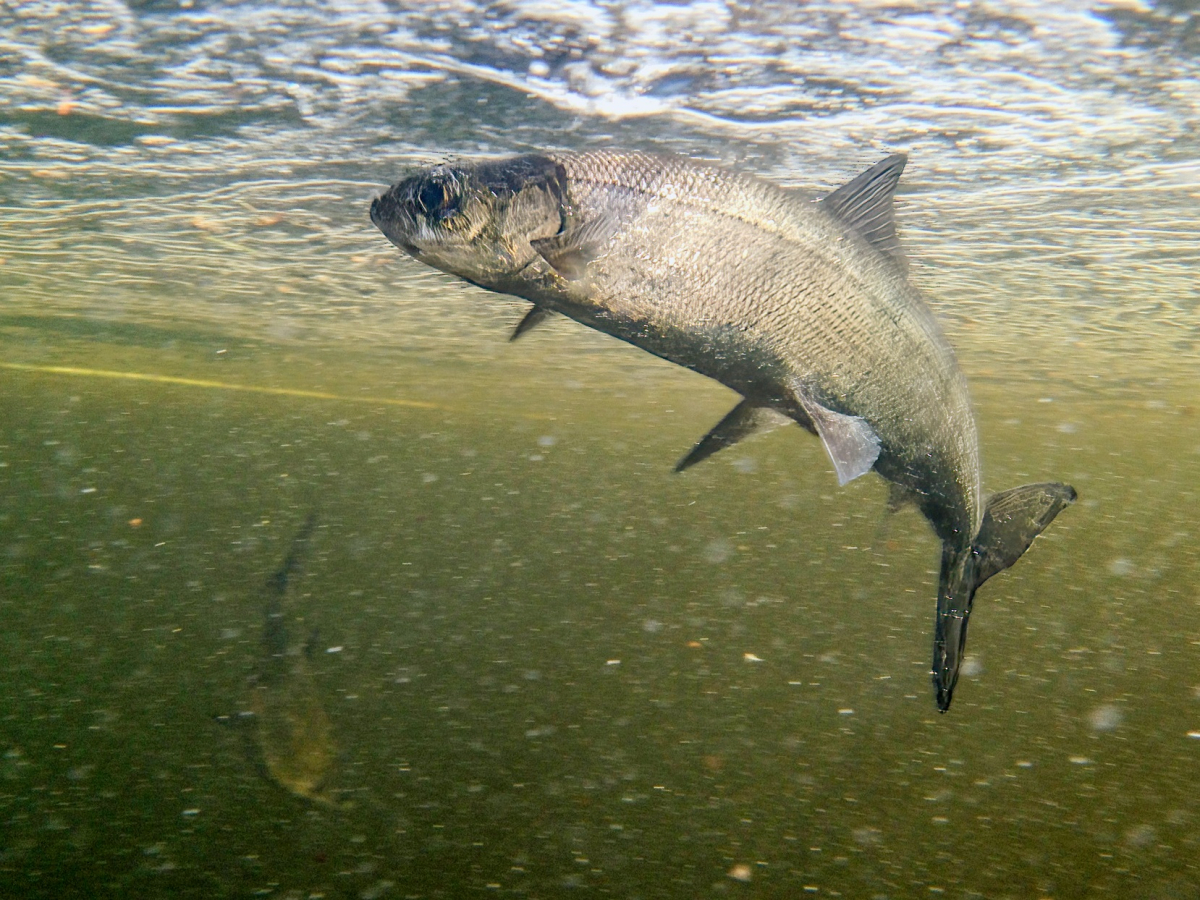Support strong Canadian climate journalism for 2025
The Petite Rivière watershed in southwestern Nova Scotia is home to the world’s only remaining population of Atlantic whitefish. It’s also where a new forestry cutblock on Crown land is proposed, much to the concern of environmentalists and scientists who say any activity could threaten the fish.
Among them is Paul Bentzen, who runs a lab at Dalhousie University in Halifax dedicated to researching and protecting the fish, which are estimated to have diverged from other species of whitefish more than 10 million years ago. He notes the whitefish are an anomaly — there are no other species endemic to Canada that are both so ancient and so endangered. According to estimates from 2012, there were only about 40 able to reproduce or contribute sperm to make more fish, and the federal government notes the “estimate is among the smallest reported for single populations of fish, let alone an entire fish species.”

Although Bentzen isn’t sure exactly how logging near the lake would disrupt the fish, he said heavy machinery removing trees, leading to more silt runoff is concerning. Since trees prevent sediment runoff and hold water, removing some would mean more water in the lake and possibly more nutrients from the soil funnelling into the fish habitat, leading to algae blooms. The fish lay their vulnerable eggs in the winter when the province experiences high levels of precipitation through rain and snow.
He believes the 49-hectare cut proposed by WestFor, a forestry group that supplies lumber to 13 mills in the province, is too risky when talking about a population as vulnerable as the whitefish, a relative of the Atlantic salmon. In response to a request for comment, the company said the area is still pending approval for harvest.
“[From] the perspective of the number of trees that are harvested annually in Nova Scotia, I mean, this is tiny. This is absolutely miniscule,” said Bentzen.
“But from the perspective of the Atlantic whitefish, it's huge because this represents a significant patch of shoreline in the immediate drainage of the lakes. That is the best remaining habitat these fish have.”
On March 14, the proposed cutblocks were posted on the province’s Harvest Plan Map Viewer, allowing for public comment until April 23. In a statement to Canada’s National Observer, the NS Department of Natural Resources and Renewables said, “Public comment and information received factor into what needs to be considered before approval. It’s an important first step of many checks and balances in the approval process that each block goes through.”
After the public comment period closes, an area review will take place before harvest approval is granted, said spokesperson for the department, Steven Stewart.
Bentzen said it's difficult to gauge the impact of anything on a fish so rare.
"It's very hard to know where they are and what they're doing. So for all I know, they could be spawning in shoreline areas immediately adjacent to the proposed logging site,” he said.
“I'm not saying they are, I'm just saying we have no way of knowing otherwise.”
The cutblock is on the banks of Minamkeak Lake, one of three lakes in the watershed. The fish live in Minamkeak, as well as in Hebb and Milipsigate, which are interconnected. The latter two are also home to the smallmouth bass and chain pickerel, non-native species that prey on Atlantic whitefish and threaten its survival.
The lake where the cut is proposed is the only one where chain pickerel haven’t been detected, explained Bentzen, and not surprisingly, the only place where adult Atlantic whitefish have been spotted in recent years.
The pickerel, which Bentzen said is like a “freshwater barracuda,” is a relative of the northern pike, and can consume a fish two-thirds its size. It’s a threat not just to the Atlantic whitefish, but to many other native species since it was illegally introduced in the 1940s and first spotted in the Petite Rivière watershed in 2014.
Before that, a huge dam significantly impacted the fish. Originally, the fish moved between river and ocean ecosystems, like salmon, but when the Tusket River was dammed in 1929, they were trapped on the freshwater side, where they remain to this day.
Although they’ve adapted, Bentzen said research from a Dalhousie PhD student in the early 2000s showed baby fish grown in captivity would still move into salt water given the chance.

Community members in Bridgewater, the town adjacent to the lakes, are also voicing their opposition to the cut. George Buranyi of the Minamkeak Watershed Protection Alliance said the lakes, which supply the town’s drinking water, should be designated for further protection. The lakes were protected to a certain extent in 2006, but agriculture and forestry still occur in the area, which the province said haven’t affected the whitefish so far.
Buranyi points to the Lahey Report update, which found clear-cut logging and sub-par forestry practices still abound after a 2018 list of recommendations to overhaul the industry, which included suggestions on how to better protect wildlife. The province says the proposed cut would fit into the new ecological forestry management guide.
“We are committed to working towards having the watershed designated and included in the 320,000 hectares or 20 per cent of lands and seas that the premier promised to protect by 2030,” said Buranyi.






Comments